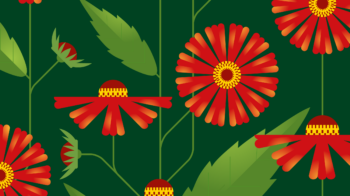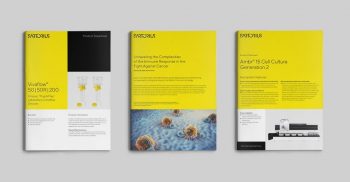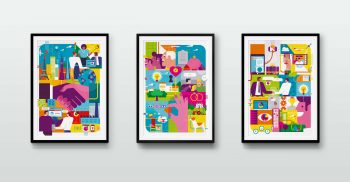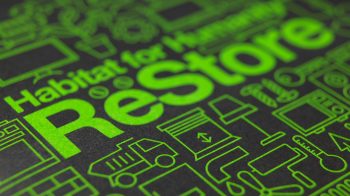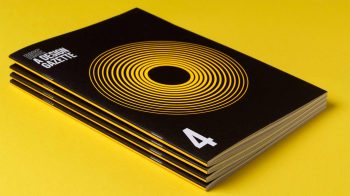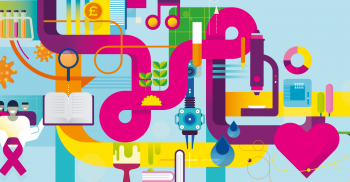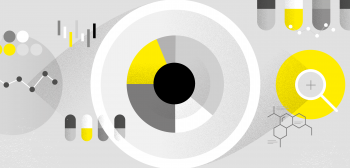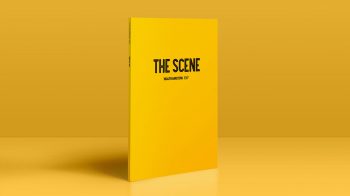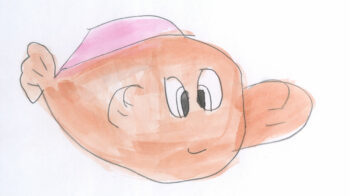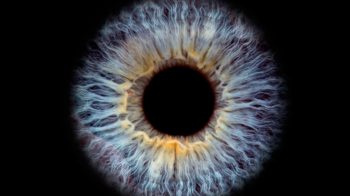Logo love: how good is yours?
With so much marketing noise being pushed at us through ever more diverse and personal channels, logo’s are more than ever being challenged to work harder and quicker on our behalf. Which makes them really hard to get right. We work on countless design projects of all types, so we do a lot of listening, a lot of research and a lot of learning along the way. And over time we have developed some simple criteria to test the effectiveness of a logo.
And we’d like to share them with you.
Clarity (of message)
For a logo to function well it should make one single, strong, and uncluttered statement. In this instance, less always becomes more. So the first thing you must always do is figure out what you’re trying to say.
ToysRUs
This is a logo that simply says ‘we are toys’. And does it in a childlike and playful way. The backward-ness of the R is actually meant to evoke a child’s naiveté and the fact that children don’t worry about mistakes or punctuation, they just get lost in their imagination, in their toys and in acting their age.
Did you know:
Founder Charles Lazarus punned the brand name out of his own surname: Laz ‘R’ Us. Originally a kids furniture store during the post-war baby boom; kids and parents started asking more for toys than furniture and so it came to be …Toys ‘R’ Us.
Simplicity
A logo should be able to be easily recalled after just a glance. A glance, after all, is typically all your logo is ever going to get from most people. So avoid complex, overly fussy or stylised designs or logos with multiple parts.
Nike
Nike are one of the worlds most recognisable and iconic … icons, at its most basic level, the Swoosh simply sets out to represent motion and speed.
Did you know:
The Swoosh was designed bya college student, Carolyn Davidson for $35.00in 1971.Davidson not only designed the Swoosh but also suggested the name Nike as an alternative to founder Phil Knight’s other idea for a brand name: ‘Dimension 6.’ In Greek mythology, Nike is the Winged Goddess of Victory.
Legibility
We always demonstrate how a proposed design will appear in actual use. The marque, isolated by itself on a page, can be deceptive. It is much more informative to show it in a range of applications: large and small, in colour and black-and-white, and across relevant media,to test how clear and legible it is.
WWF
The inspiration for the World Wildlife Fund (WWF) logo came from Chi-Chi: a giant panda that arrived at London Zoo in 1961. Aware of the need for a strong, recognisable symbol that would overcome all language barriers, the WWF’s founders agreed that this big, furry animal with her appealing, black-patched eyes would make an excellent logo, and, to this day, she is perhaps the most powerful symbol in the world when it comes to species conservation.
Did you know:
Sir Peter Scott, one of the WWF’s founders, drew the first logo, and said at the time: ‘We wanted an animal that is beautiful, is endangered, and one loved by many people in the world for its appealing qualities. We also wanted an animal that had an impact in black and white to save money on printing costs!’
Distinction
Don’t settle for a me-too logo. Research your market thoroughly and compare all the logos you find in their competitive set. This may well reveal some entrenched visual conventions to avoid. Biotechs often use DNA or cell icons, cogs are favoured in engineering and globes in telecoms. All relevant but without being distinctive you will find it hard to get noticed.
Apple
In the Bible, Adam and Eve are tempted by Satan, to taste the fruit from the tree of knowledge. That fruit, we all know, was an apple. The apple, as a symbol of lust and desire, is one of the oldest and most potent in Western mythology.
Did you know:
According to Rob Janoff, the designer of the Apple logo, he didn’t explicitly intend this meaning when he created the logoin 1977, and he only included the bite ‘for scale, so people get that it was an apple not a cherry!’
Usage
Uber recently redesigned their logo and since most of their customers use a phone app to use the service, the primary focus of the design brief was how the logo would appear as an app icon, on a small screen. A more conventional business (letterhead/business card), or, as an example, a logistics company (large livery) would place different demands on logo usage. So always seek clear guidance for intended usage before you start designing.
Twitter
From its very beginning, Twitter has always used a bird for its logo, and in February 2012, a tweet from an employee divulged that the ‘Larry the Bird’ logo was named after Larry Bird of the NBA’s Boston Celtics. Later that year Twitter unveiled a logo redesign, replacing Larry the Bird with an updated icon simply named as the ‘Twitter Bird’, the now sole symbol for the company’s branding.
Did you know:
According to Douglas Bowman, designer of Twitter, the new logo resembles a mountain bluebird, a symbol of what Twitter is and a metaphor for what it permits. ‘True to Twitter’s brand,’ he said, ‘we viewed the bird as the ultimate representation of freedom and wide-open possibility.’ And, of course, it can tweet.
Longevity
Nothing dulls faster than the cutting edge so a logo should be contemporary enough to reflect its moment and the media it will live in, yet not so trendy as to appear dated before its time. And remember, heritage and authenticity are priceless values that all great brands possess. And it’s the same for logos. Sometimes if you leave a logo long enough, it becomes a classic in its own right.
London Underground
One of Britain’s most identifiable symbols is the bar-and-circle Transport for London roundel, which has since its first incarnation in 1908 become not just a globally recognised commercial transport logo but a cultural iconin its own right.
Did you know:
The design of the roundel (which until 1972 was referred to as the bull’s-eye) is attributed to no one person and its marriage of typography, and form is said to symbolise nothing in particular. But the crisp, memorable shape that makes it an easy-to-read train station marker has retained its integrity while adapting to changing eras and expanded uses with tweaks to colour and typography, all while retaining its power as a symbol, for London’s transit system and the city itself.
In conclusion
Trends come and go, design techniques evolve and the development of digital media continues to transform how we communicate, but for now, logos remain a critical aspect of any brand, any marketing communication strategy. They anchor our companies and products and represent the single most visible manifestation of a brand to the outside world. Which is why their design, their clarity, simplicity and uniqueness remain so important to the influence they can bring.
How does yours measure up?

